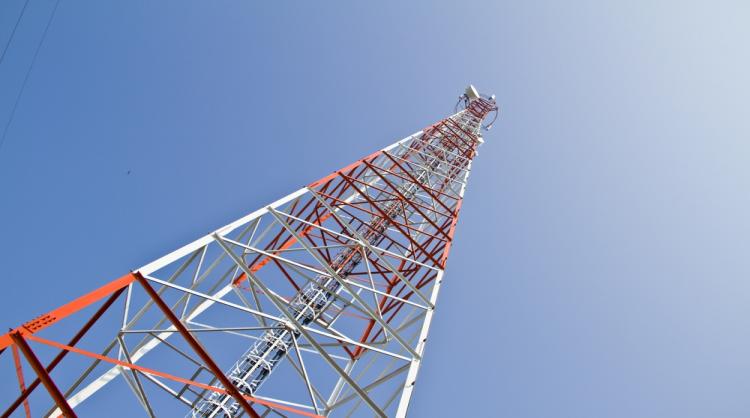FCC Expected to Revise Telecom Pole Attachment Rates
August 28, 2015 | by Andrew Regitsky

It’s not sexy like “net neutrality” or “technology transitions,” but the FCC rules for calculating the rate telecom companies pay for pole attachments are important simply because of the large amounts of money involved. By some estimates, pole attachment rentals, comprise up to 1 percent of operating costs for some companies.
The current pole attachment rules for telecom companies were adopted by the FCC on April 7, 2011 in Docket 07-245. The intent of the rules was to equalize the rates paid by telecommunications providers and cable owners. Cable company rates are calculated separately under rules ratified by the U.S. Supreme Court in 1987 and have historically been lower than rates for telecoms.
However, despite the best efforts of the Commission, the new rules continued the disparity between cable operators and telecom providers. In response in 2011, the National Cable and Telecommunications Association, TW Telecommunications, and CompTel filed a Petition for Reconsideration of the Order, in which they predicted that the new rules would not solve the inequity problem. As we discuss below, they were correct. However, after industry comments were filed regarding the Petition, in 2013 the U.S. Court of Appeals for the D.C. Circuit upheld the Order, ensuring the Commission’s 2011 rules for calculating the pole attachment rate for providers of telecommunications services would remain the law.
Now, more than four years after the 2011 Order, the Commission decided to refresh the pole attachment rate record. It did so out of concerns the current rules have not led to equitable rates and, as discussed in the Open Internet Order, have potentially depressed incentives for investment. Industry comments were filed in June.
Here are more details:
Section 224(B) (1) of the Telecommunications Act provides the Commission with the authority over pole attachment rates. It states that:
Subject to the provisions of subsection (c) of this section, the Commission shall regulate the rates, terms, and conditions for pole attachments to provide that such rates, terms, and conditions are just and reasonable, and shall adopt procedures necessary and appropriate to hear and resolve complaints concerning such rates, terms, and conditions.
As noted by Verizon, the 2011 pole attachment rules,
included cost allocators (66 percent for urban areas and 44 percent for non-urban areas) in the new telecom formula “to allow the pole owner to charge a monthly pole rental rate that reflects some contribution to capital costs” but “do[es] not permit utilities to recover 100 percent of apportioned, fully-allocated costs.” The Commission found that “the specific percentages [selected] provide a reduction in the telecom rate, and will, in general, approximate the cable rate (Verizon Comments, in Docket 07-245, pp. 1-2).
However, as predicted in the Petition for Reconsideration, power companies paired the cost allocators in the new telecom formula with significantly lower numbers of average attaching entities than reflected in the Commission cost allocator assumptions. The Commission made its telecom and cable parity estimates with the presumptions that there would be five entities attached on urban poles and three entities on rural poles.
However, in actuality, the presumptive number of pole attachers is often rebutted by the pole owner. In many cases there may be fewer, and in the case of urban areas, significantly fewer attaching companies than are accounted for by the Commission’s presumptions. In that case, the revised telecom rate formula would not yield rates that approximate the cable rate. Telecom companies would pay much more.
For example, Verizon states that the rules as implemented by pole owners result in a telecom rate that is 70 percent higher than the cable rate (Id. p. 4).
Moreover, the Petition for Reconsideration in Appendix A notes that the underlying rate spread can be as high as six dollars—a significant disparity given that “a $3 difference between the cable rate and the present telecom rate could amount to approximately $90 million to $120 million per year, which could ultimately affect subscribers and future infrastructure investment, including broadband deployment.
Thus, the 2011 Petition sought a change in the cost allocation rules to ensure pole attachment parity. Specifically, the telecom rate formula would be expanded to include not only instances where there are three and five attaching entities, but would also provide corresponding cost adjustments scaled to other entity counts. This would ensure that rates are equal for all entities.
Other than pole owners, almost all industry entities support the requested change in the rules. Of course, it is an easy call for telecom companies which would see their pole attachment rates drop significantly. Cable companies also support the rule change because their broadband services are now classified as telecommunications services and presumably would see their costs rise as they begin to pay pole rentals based on the telecom formula. Thus, this case ought to be a slam dunk for the Commission. Hopefully, it will take action this fall to ensure that all industry players pay a fair and equitable rate for pole attachments.
By Andy Regitsky, CCMI

